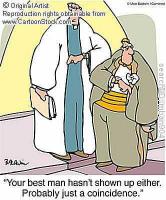Serendip is an independent site partnering with faculty at multiple colleges and universities around the world. Happy exploring!
Reply to comment
Remote Ready Biology Learning Activities

Remote Ready Biology Learning Activities has 50 remote-ready activities, which work for either your classroom or remote teaching.
Narrative is determined not by a desire to narrate but by a desire to exchange. (Roland Barthes, S/Z)
What's New? Subscribe to Serendip Studio
Recent Group Comments
-
alesnick
-
Richard L Stover (guest)
-
alesnick
-
Anne Dalke
-
alesnick
-
Paul Grobstein
-
Paul Grobstein
-
Paul Grobstein
-
alesnick
-
bolshin
Recent Group Posts
A Random Walk
Play Chance in Life and the World for a new perspective on randomness and order.
New Topics
-
7 weeks 5 days ago
-
7 weeks 6 days ago
-
8 weeks 3 days ago
-
8 weeks 3 days ago
-
8 weeks 3 days ago


"an atomic view of the self"
I think this phrase, which I jotted down along w/ lots of others during our session last Tuesday, was one that Alice articulated in response to Paul's story. It was also mine. Embedded in it I hear (and here also articulate) the question whether--in insisting that each of us makes a different story of the same imput (say a pattern of dark and light pixels, in which some of us see dolphins, other humans, @ play); in insisting, further, that each of us makes different stories @ different times; in insisting, even further, that we can and should hone the ability to generate alternative interpretations--Paul was describing selves that are radically alone, fundamentally separate, entirely independent--the "authentic aloneness" Bharath describes below. Where, in such a story, are the shared scripts--those "prom dates" out of which we compose our stories? Where the intersections that allow us to write, and act, plays in common? Where the acknowledgment that we get our stories from one another? That we can alter one another's stories as well as our own?

I felt that we were being offered a tale intended to liberate us from social conventions, from the scripts that bind us, into alternate possibilities. But what (@ least some of us) heard was the dark side of that tale. A script that separated us from one another. A script that might be freeing only to those who are already felt themselves free of such bonds. The challenge here was that those under more pressure, more stress, are less likely to be able to play with interpretation, less able to imagine alternative explanations. And they are the ones who may need that capacity the most.
In my EMLY seminar this week, we read Lisa Belkin's wonderful 2002 NYTimes Magazine essay, "The Odds of That," which says, among other perceptive things, that we are a species biologically programmed to see patterns--a tendency which increases when we sense danger. Pattern-seeking animals, we are "hard-wired to over-react." Under pressure, in fear, we turn correlations into coincidences; we respond to anomalies as if they were "real," part of larger, and meaningful, patterns. Finding such connections is the way we make sense of the world, and so comfort ourselves both with a sense of its order and our own ability to weave things together.